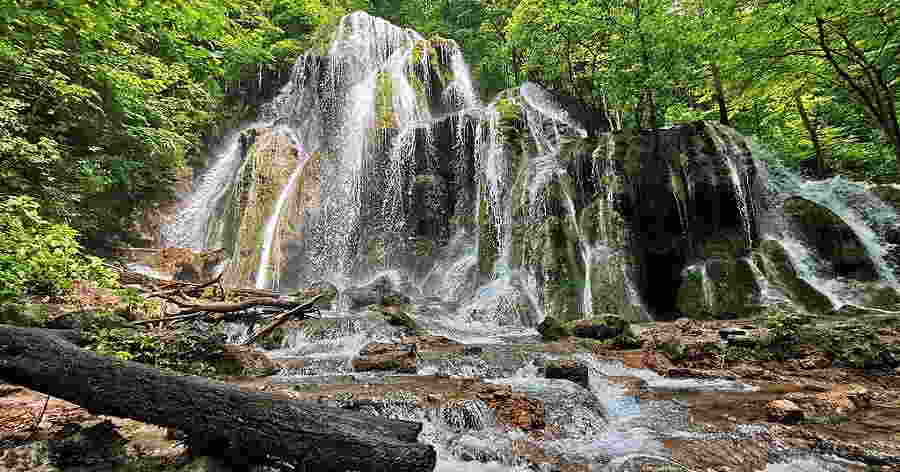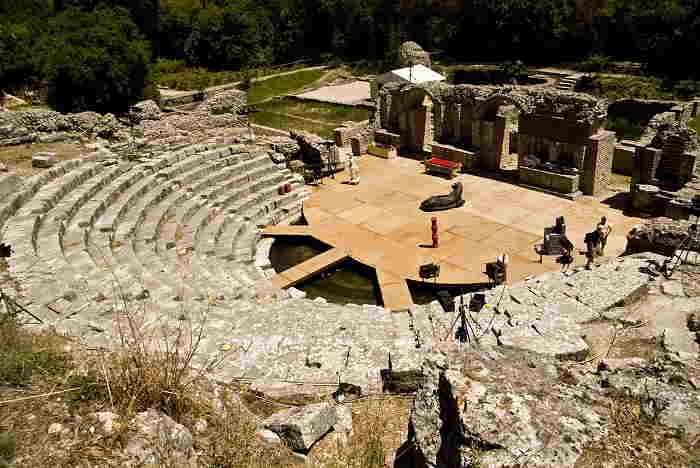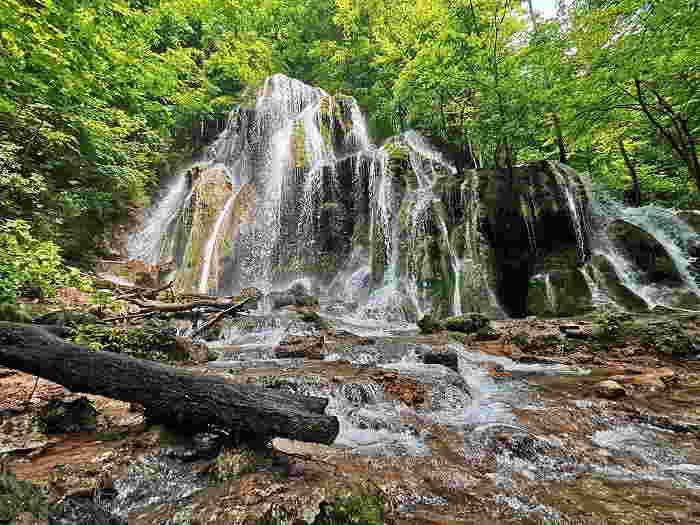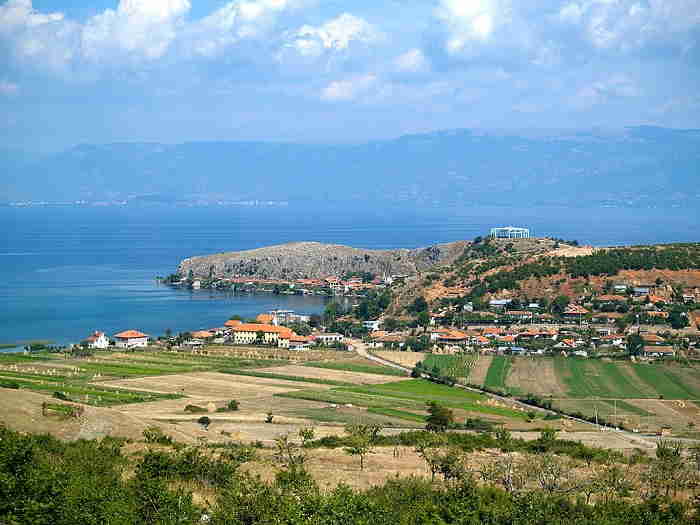

Butrint is an archaeological site located in modern-day Albania, on the Ionian Sea. It is a UNESCO World Heritage Site and is one of the most important archaeological sites in the Mediterranean. Butrint was first settled in the 7th century BC by Greek colonists, who built a temple and various other structures. The city flourished throughout the classical period, becoming an important port and trading center. It was also the site of many battles and wars during the Hellenistic period. Butrint was later conquered by the Romans in 228 BC and was made a municipium, or a free city. During Roman rule, the city was expanded and many public buildings, including a theater and a new temple, were built. The city also became a significant trading center, as well as a religious center, with a number of temples dedicated to different gods and goddesses. Butrint continued to prosper under the rule of the Byzantine, Venetian, and Ottoman Empires. In the early 20th century, Italian archaeologists began excavating the site and discovered a wealth of artifacts, including pottery, jewelry, coins, sculptures, and mosaics. The most notable discovery is the Butrint Mosaic, a stunningly detailed floor mosaic depicting scenes from Greek mythology. In 1992, the site was declared a World Heritage Site by UNESCO and is now a popular tourist destination.

Berat and Gjirokastra are two of the most important and historic cultural cities in Albania. They are both situated in the south of the country and are the only cities in Albania to be part of UNESCO's World Heritage List. Berat is the oldest city in Albania, with a history stretching back to the 4th century BC. It is known as the 'City of a Thousand Windows', due to its unique Ottoman-style architecture. Berat's historic centre is situated along the banks of the Osum River, with a number of historic monuments, churches, mosques and bazaars. The area is also home to the famous Onufri Iconographic Museum, which houses an impressive collection of religious iconography. Gjirokastra is known as the 'City of Stone', due to its unique cobblestone streets, terraced houses and Ottoman-style architecture. It is one of the oldest cities in Albania, founded by the Greek tribe of the Ardians in the 4th century BC. The historic centre of Gjirokastra is a UNESCO World Heritage Site and home to a number of churches and mosques, as well as the Gjirokastra Castle. The castle is an impressive fortress, built in the 13th century and home to a range of interesting archaeological artifacts. Both Berat and Gjirokastra are traditional cities, with a rich cultural heritage and plenty of historical attractions to explore.

The 'Ancient and Primeval Beech Forests of the Carpathians and Other Regions of Europe' is a UNESCO World Heritage site comprising a network of protected forests that span across 18 countries in Europe. It was designated as a World Heritage Site in 2007. These forests represent some of the last and most significant remnants of primeval beech forests in the region. Albania is one of the 18 European countries that have these Beech forests. Encompassing a wide range of landscapes, from the Carpathian Mountains to the northern European lowlands, the site is characterized by its diverse ecosystems, with beech trees as the dominant species. What makes these forests truly exceptional is their untouched, ancient nature, with some areas having been preserved in their pristine state for over 10,000 years.
The forests offer a sanctuary for a wealth of biodiversity, including numerous rare and endangered species of plants and animals. The ecosystems here are a crucial part of the natural heritage of Europe, contributing to the continent's ecological balance and overall environmental health. The harmonious coexistence of diverse flora and fauna and the sheer age of these ecosystems make this World Heritage site a living testament to Europe's natural history.

The Natural and Cultural Heritage of the Ohrid Region is a UNESCO World Heritage site situated in both Albania and North Macedonia, designated in 1979 for its unique combination of natural beauty and rich cultural history. This region, which centers around Lake Ohrid is a treasure trove of cultural heritage. It boasts over 800 Byzantine-style icons dating from the 11th to the end of the 14th century, along with numerous medieval churches, monasteries, and archaeological sites.
The region has a deep historical significance, having been inhabited continuously for over 2,000 years. The old town of Ohrid itself, with its cobblestone streets and historic architecture, is a living testament to the region's rich past.
Ohrid was an important spiritual and cultural center in the Balkans, known as the "Jerusalem of the Balkans" for its many churches and monasteries.